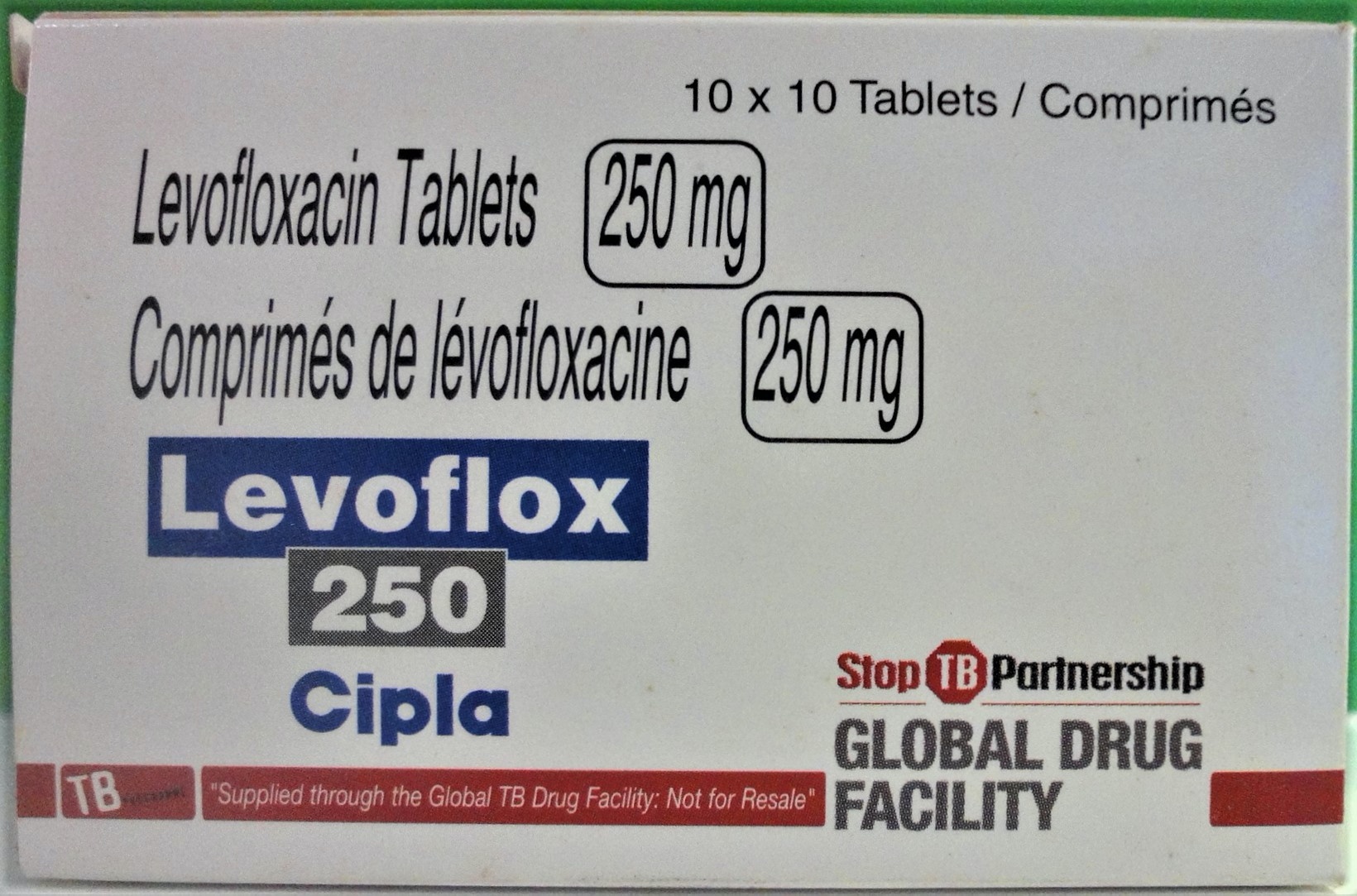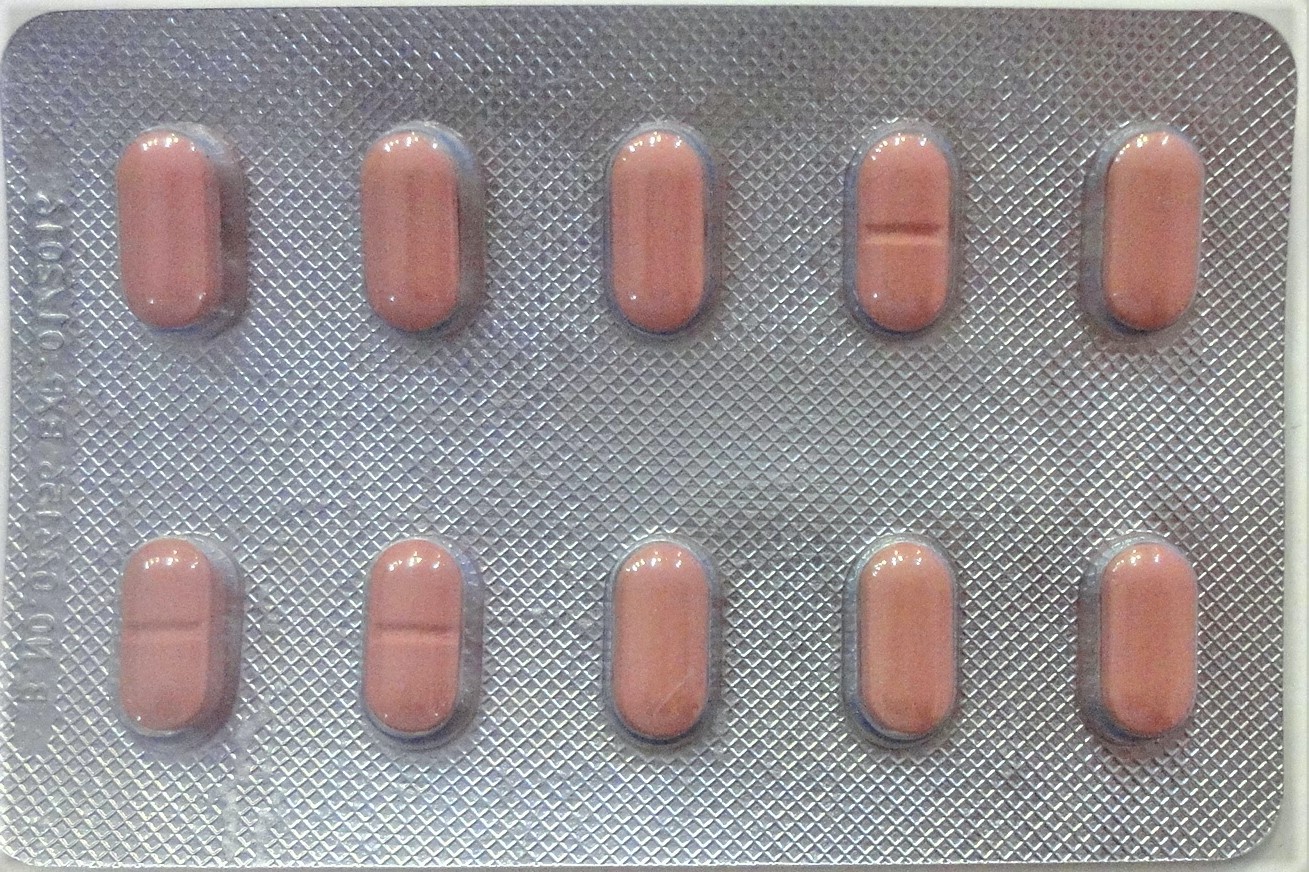LEVOFLOX Tablet
ក្រុមហ៊ុនផលិតឱសថ:
Cipla Ltd., India


- សារធាតុសកម្ម
- ប្រសិទ្ធិភាពព្យាបាល និង កម្រិតប្រើប្រាស់
- ហាមប្រើ
- ផលរំខាន
- អន្តរប្រតិកម្ម
- ស្ត្រីមានផ្ទៃពោះ និង ស្ត្រីបំបៅដោះកូន
- ការប្រុងប្រយ័ត្នជាពិសេស
- សកម្មភាពឱសថ បរិយាយប័ណ្ណឱសថ
-
សារធាតុសកម្ម
Levofloxacin 250mg
-
ប្រសិទ្ធិភាពព្យាបាល និង កម្រិតប្រើប្រាស់
Levoflox 250 tablets contains levofloxacin as the active ingredient. This belongs to a group of antibiotics called fluoroquinolones. Levofloxacin works by killing bacteria that cause infections, including the bacteria that cause tuberculosis (TB).
Levoflox 250 tablets is used to treat TB caused by Mycobacterium tuberculosis. It is always given together with other medicines for TB.
To help clear up your TB completely, you must keep taking this medicine for the full time of treatment even if you begin to feel better. This is very important. It is also important that you do not miss any doses.
Dosage
Adults and adolescents:
The recommended dose is 750-1000mg, given once daily.
Children:
The recommended dose is 20mg/kg/day, divided into two daily doses, up to a maximum of 1000mg/day.
Renal impairment:
For patients with an estimated creatinine clearance ≤30mL/min, with or without haemodialysis, the dose should be reduced to 750-1000mg given three times per week.
Hepatic impairment:
No adjustment of dosage is required.
Elderly:
No adjustment of dosage is required in the elderly, other than that imposed by consideration of renal function.
Method of administration
Levoflox 250 tablets should be swallowed whole with a sufficient amount of liquid. The tablets may be taken without regard to food.
-
ហាមប្រើ
- in patients with hypersensitivity to levofloxacin, other quinolones or to any of the excipients
- in patients with epilepsy
- in patients with history of tendon disorders related to fluoroquinolone administration
- in breast-feeding women
-
ផលរំខាន
Infections and infestations
Uncommon: fungal infection (and proliferation of other resistant microorganisms of the normal flora)
Blood and lymphatic system disorders
Uncommon: leukopenia, eosinophilia
Rare: thrombocytopenia, neutropenia
Very rare: agranulocytosis
Not known: pancytopenia, haemolytic anaemia
Immune system disorders
Very rare: anaphylactic shock. Anaphylactic and anaphylactoid reactions may sometimes occur even after the first dose.
Not known: hypersensitivity
Metabolism and nutrition disorders
Uncommon: anorexia
Very rare: hypoglycaemia, particularly in diabetic patients
Psychiatric disorders
Uncommon: insomnia, nervousness
Rare: psychotic disorder, depression, confusional state, agitation, anxiety
Very rare: psychotic reactions with self-endangering behavior including suicidal ideation or acts, hallucination
Nervous system disorders
Uncommon: dizziness, headache, somnolence
Rare: convulsion, tremor, paraesthesia
Very rare: sensory or sensorimotor peripheral neuropathy, dysgeusia including ageusia, parosmia including anosmia
Eye disorders
Very rare: visual disturbance
Ear and Labyrinth disorders
Uncommon: vertigo
Very rare: hearing impaired
Not known: tinnitus
Cardiac disorders
Rare: tachycardia
Not known: electrocardiogram QT prolonged
Vascular disorders
Rare: hypotension
Respiratory, thoracic and mediastinal disorders
Rare: bronchospasm, dyspnoea
Very rare: allergic pneumonitis
Gastrointestinal disorders
Common: diarrhoea, nausea
Uncommon: vomiting, abdominal pain, dyspepsia, flatulence, constipation
Rare: haemorrhagic diarrhoea - which in very rare cases may be indicative of enterocolitis, including pseudomembranous colitis
Hepatobiliary disorders
Common: hepatic enzyme increased (ALT/AST, alkaline phosphatase, GCT)
Uncommon: blood bilirubin increased
Very rare: hepatitis
Not known: jaundice and severe liver injury, including cases with acute liver failure, primary in patients with severe underlying diseases
Skin and subcutaneous tissue disorders
Uncommon: rash, pruritus
Rare: urticaria
Very rare: angioneurotic oedema, photosensitivity reaction
Not known: toxic epidermal necrolysis, Stevens-Johnson syndrome, erythema multiforme, hyperhidrosis, Mucocutaneous reactions may sometimes occur even after the first dose.
Musculoskeletal and Connective tissue disorders
Rare: tendon disorder including tendinitis (e.g. Achilles tendon), arthralgia, myalgia
Very rare: tendon rupture. This undesirable effect may occur within 48 hours of starting treatment and may be bilateral. Muscular weakness (which may be of special importance in patients with myasthenia gravis).
Not known: rhabdomyolysis
Renal and urinary disorders
Uncommon: blood creatinine increased
Very rare: acute renal failure (e.g. due to interstitial nephritis)
General disorders and administration site conditions
Uncommon: asthenia
Very rare: pyrexia
Not known: pain (including pain in back, chest, and extremities)
Other undesirable effects which have been associated with fluoroquinolone administration include:
- extrapyramidal symptoms and other disorders of muscular coordination
- hypersensitivity vasculitis
- attacks of porphyria in patients with porphyria
-
អន្តរប្រតិកម្ម
(See the package insert about the details.)
Iron salts, magnesium- or aluminium-containing antacids
Sucralfate
Theophylline
NSAIDs
Coadministration with NSAIDs
Probenecid and cimetidine
Vitamin K antagonists
Drugs known to prolong QT interval
Drugs undergoing renal tubular secretion
-
ស្ត្រីមានផ្ទៃពោះ និង ស្ត្រីបំបៅដោះកូន
Women of childbearing potential
Pregnancy should be avoided in women treated with levofloxacin. Adequate contraceptive measure should be taken.
Pregnancy
There are limited data from the use of levofloxacin in pregnant women. Animal studies do not indicate direct or indirect harmful effects with respect to reproductive toxicity.
However in the absence of human data and due to experimental data suggesting a risk of damage to the weight-bearing cartilage of the growing organism by fluoroquinolones, levofloxacin should only be used in pregnancy if the benefit is considered to outweigh the risks, and there are no available treatment alternatives.
Lactation
Levofloxacin is contraindicated in breast-feeding women. There is insufficient information on the excretion of levofloxacin in human milk; however other fluoroquinolones are excreted in breast milk.
In the absence of human data and due to experimental data suggesting a risk of damage to the weight-bearing cartilage of the growing organism by fluoroquinolones, Levoflox 250 tablets must not be used in breast-feeding women.
-
ការប្រុងប្រយ័ត្នជាពិសេស
(See the package insert about the details.)
Tendinitis and tendon rupture
Clostridium difficile-associated disease
Patients predisposed to seizures
Patients with G-6-phosphate dehydrogenase deficiency
Patients with renal impairment
Hypersensitivity reactions
Hypoglycaemia
Prevention of photosensitization
Patients treated with Vitamin K antagonists
Psychotic reactions
QT interval prolongation
Peripheral neuropathy
Patients with myasthenia gravis
Opiates
Hepatobiliary disorders
Paediatric population
-
សកម្មភាពឱសថ
Pharmacotherapeutic group: Antibacterial for systemic use, fluoroquinolone
Levofloxacin is a synthetic antibacterial agent of the fluoroquinolone class and is the S(-) enantiomer of the racemic drug substance ofloxacin.
Mechanism action
Levofloxacin has in vitro activity against M-Tuberculosis, as well as against a wide range of Gram-positive and Gram-negative pathogens. The bactericidal action of levofloxacin against M-Tuberculosis results from the inhibition of the DNA gyrase, encoded by the gyrA and gyrB genes.
The wild-type levofloxacin MIC distribution for clinical isolates of M-Tuberculosis has been reported by different investigators to range between 0.125-0.5 mg/l. When resistance to fluoroquinolones arises, it is generally caused by mutations in gyrA. Cross-resistance within the fluoroquinolone drug class is extensive, though not universal.
*ព័ត៌មានឱសថត្រូវបានរៀបរៀងដោយ អ៊ីម៉ាតុគឹ មេឌីក (ខេមបូឌា) ដោយផ្អែកលើប្រភពព័ត៌មានខាងក្រោម។ សម្រាប់ព័ត៌មានលម្អិត សូមស្វែងរកនៅក្នុងក្រដាសព័ត៌មាននៃឱសថនីមួយៗ ឬ សាកសួរទៅកាន់ក្រុមហ៊ុនឱសថឬតំណាងចែកចាយនៃឱសថនីមួយៗ។
ប្រភពព័ត៌មាន៖
- ក្រដាសព័ត៌មាននៃឱសថសម្រាប់អ្នកជំនាញវេជ្ជសាស្ត្រដែលប្រើប្រាស់នៅប្រទេសជប៉ុន (Pharmaceutical and Medical Devices Agency, Pmda): https://www.pmda.go.jp
- ព័ត៌មានសង្ខេបនៃឱសថសម្រាប់អ្នកជំងឺដែលប្រើប្រាស់នៅប្រទេសជប៉ុន: http://www.rad-ar.or.jp
